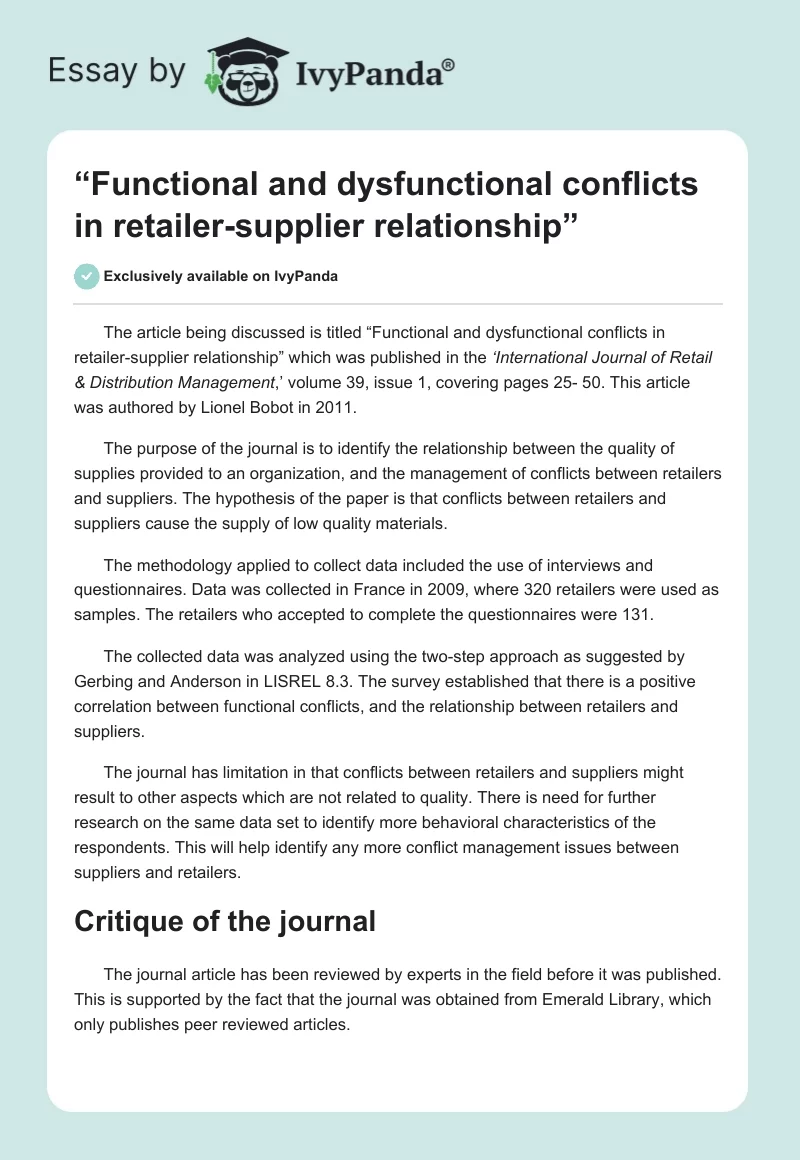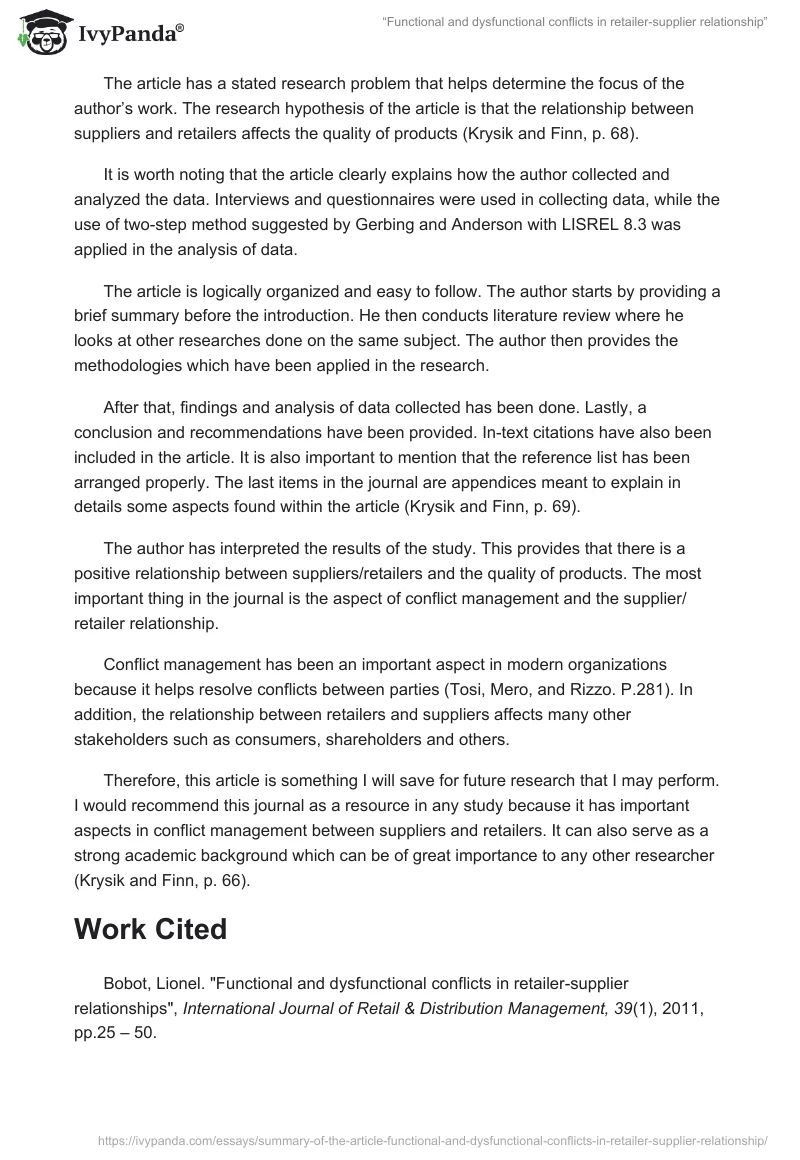The article being discussed is titled “Functional and dysfunctional conflicts in retailer-supplier relationship” which was published in the ‘International Journal of Retail & Distribution Management,’ volume 39, issue 1, covering pages 25- 50. This article was authored by Lionel Bobot in 2011.
The purpose of the journal is to identify the relationship between the quality of supplies provided to an organization, and the management of conflicts between retailers and suppliers. The hypothesis of the paper is that conflicts between retailers and suppliers cause the supply of low quality materials.
The methodology applied to collect data included the use of interviews and questionnaires. Data was collected in France in 2009, where 320 retailers were used as samples. The retailers who accepted to complete the questionnaires were 131.
The collected data was analyzed using the two-step approach as suggested by Gerbing and Anderson in LISREL 8.3. The survey established that there is a positive correlation between functional conflicts, and the relationship between retailers and suppliers.
The journal has limitation in that conflicts between retailers and suppliers might result to other aspects which are not related to quality. There is need for further research on the same data set to identify more behavioral characteristics of the respondents. This will help identify any more conflict management issues between suppliers and retailers.
Critique of the journal
The journal article has been reviewed by experts in the field before it was published. This is supported by the fact that the journal was obtained from Emerald Library, which only publishes peer reviewed articles.
The article has a stated research problem that helps determine the focus of the author’s work. The research hypothesis of the article is that the relationship between suppliers and retailers affects the quality of products (Krysik and Finn, p. 68).
It is worth noting that the article clearly explains how the author collected and analyzed the data. Interviews and questionnaires were used in collecting data, while the use of two-step method suggested by Gerbing and Anderson with LISREL 8.3 was applied in the analysis of data.
The article is logically organized and easy to follow. The author starts by providing a brief summary before the introduction. He then conducts literature review where he looks at other researches done on the same subject. The author then provides the methodologies which have been applied in the research.
After that, findings and analysis of data collected has been done. Lastly, a conclusion and recommendations have been provided. In-text citations have also been included in the article. It is also important to mention that the reference list has been arranged properly. The last items in the journal are appendices meant to explain in details some aspects found within the article (Krysik and Finn, p. 69).
The author has interpreted the results of the study. This provides that there is a positive relationship between suppliers/retailers and the quality of products. The most important thing in the journal is the aspect of conflict management and the supplier/ retailer relationship.
Conflict management has been an important aspect in modern organizations because it helps resolve conflicts between parties (Tosi, Mero, and Rizzo. P.281). In addition, the relationship between retailers and suppliers affects many other stakeholders such as consumers, shareholders and others.
Therefore, this article is something I will save for future research that I may perform. I would recommend this journal as a resource in any study because it has important aspects in conflict management between suppliers and retailers. It can also serve as a strong academic background which can be of great importance to any other researcher (Krysik and Finn, p. 66).
Work Cited
Bobot, Lionel. “Functional and dysfunctional conflicts in retailer-supplier relationships”, International Journal of Retail & Distribution Management, 39(1), 2011, pp.25 – 50.
Krysik, Judy L. and Jerry Finn. Research for Effective Social Work Practice. New York: Taylor & Francis, 2010.
Tosi, Henry L., Neal P. Mero, and John R. Rizzo. Managing organizational behavior. Oxford: Wiley-Blackwell, 2000.


